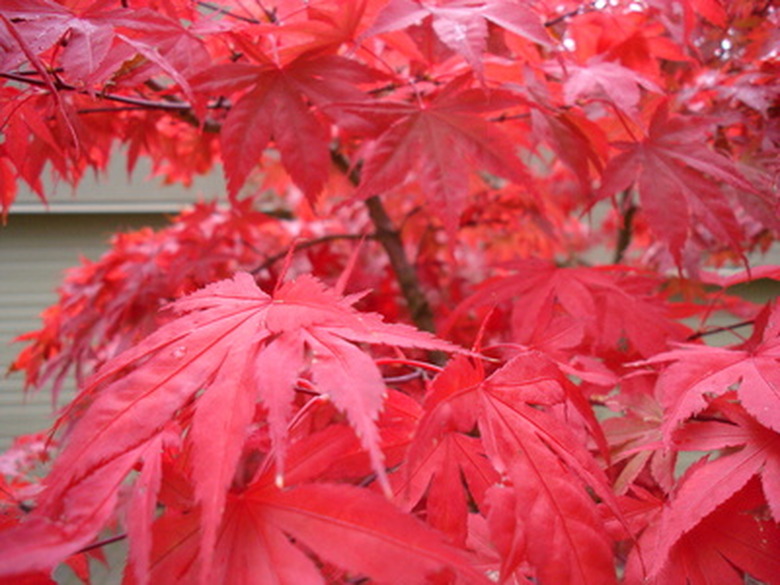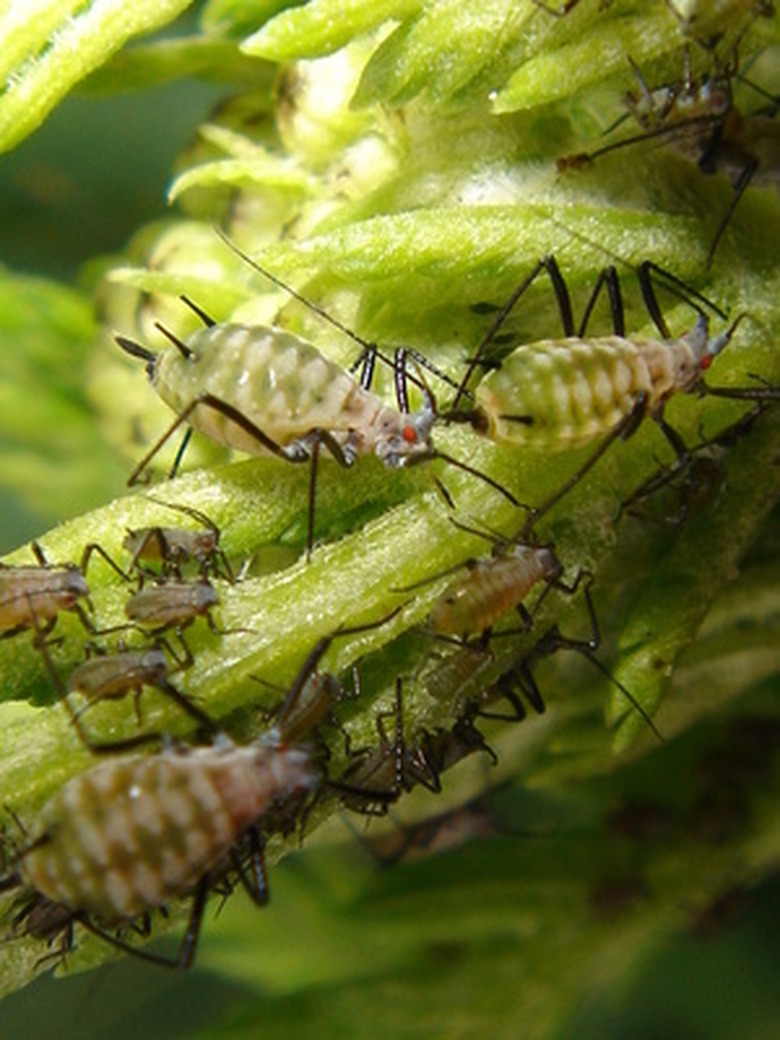Pest Control For Japanese Maples
Native to Korea, Japan and China, the Japanese maple (Acer palmatum) is prized for its foliage that turns yellow, orange, red or purple in fall. Depending on the cultivar chosen, it ranges in height from 15 to 25 feet and usually has a round shape. Pests such as aphids and spider mites are attracted to this deciduous tree and cause severe damage until controlled chemically, biologically or culturally.
Pest Identification
Scales are elongated or round insects with a flat or humped bodies and a straw-like mouth-part through which they extract fluid. Adult males, though very rare, have one set of wings. Aphids are tiny pear-shaped insects with soft bodies, long legs, antennae and slender mouths through which they puncture leaves, stems and other plant parts and suck fluid. Aphids are yellow, green, brown, black or red depending on the plants they feed on.
- Native to Korea, Japan and China, the Japanese maple (Acer palmatum) is prized for its foliage that turns yellow, orange, red or purple in fall.
- Aphids are tiny pear-shaped insects with soft bodies, long legs, antennae and slender mouths through which they puncture leaves, stems and other plant parts and suck fluid.
Tree Infestation Symptoms
Scales form masses of cotton-like white substance on the lower side of stems and branches of infected Japanese maple trees. Leaves begin to wilt, turn yellow and drop suddenly. Infected barks crack and secrete a sticky gum-like substance. Soft scales secrete abundant amounts of a sticky honeydew exudate that attracts ants. These ants protect the pests from natural enemies. Large populations of aphids cause leaves to turn yellow, curl and distort, and shoots to stunt in growth. They too produce a sticky honeydew.
- Scales form masses of cotton-like white substance on the lower side of stems and branches of infected Japanese maple trees.
- Soft scales secrete abundant amounts of a sticky honeydew exudate that attracts ants.
Cultural Control
Provide Japanese maple trees appropriate irrigation so they resist scale damage. Snip off infested branches and twigs to control spread, and prune branches to open up the canopy and allow sunlight to enter. This increases mortality rate of aphids and scale due to heat exposure. Place sticky material around the trunk of the maple tree to prevent ants from climbing and going towards the honeydew, or use ant stakes or baits. Do not exceed fertilizer application rates, as excessive nitrogen favors aphid reproduction.
Chemical Control
Apply commercially available horticultural oils over large scale infestations. Spray evenly over the entire surface, including the lower sides of leaves. Cover infested foliage with neem oil or insecticidal soap diluted in water to remove aphids. Repeat applications daily to ensure complete eradication.
- Provide Japanese maple trees appropriate irrigation so they resist scale damage.
- Snip off infested branches and twigs to control spread, and prune branches to open up the canopy and allow sunlight to enter.
Biological Control
Predatory insects such as mites, bugs and beetles, and parasitic wasps including species of Coccophagus, Metaphycus and Aphytis help control scales biologically if homeowners prefer not to use chemical control methods. Various species of parasitic wasps and predators such as lacewing, lady beetle and syrphid fly control aphids.

